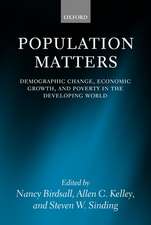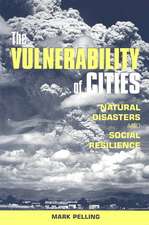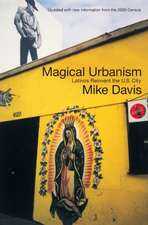City of Extremes – The Spatial Politics of Johannesburg: Politics, History, and Culture
Autor Martin J. Murrayen Limba Engleză Paperback – 14 iun 2023
Din seria Politics, History, and Culture
-
 Preț: 240.73 lei
Preț: 240.73 lei -
 Preț: 210.26 lei
Preț: 210.26 lei -
 Preț: 247.63 lei
Preț: 247.63 lei -
 Preț: 265.79 lei
Preț: 265.79 lei -
 Preț: 238.39 lei
Preț: 238.39 lei -
 Preț: 261.56 lei
Preț: 261.56 lei -
 Preț: 263.47 lei
Preț: 263.47 lei -
 Preț: 306.60 lei
Preț: 306.60 lei -
 Preț: 264.26 lei
Preț: 264.26 lei -
 Preț: 305.61 lei
Preț: 305.61 lei -
 Preț: 262.70 lei
Preț: 262.70 lei -
 Preț: 303.33 lei
Preț: 303.33 lei -
 Preț: 262.52 lei
Preț: 262.52 lei -
 Preț: 212.48 lei
Preț: 212.48 lei -
 Preț: 261.56 lei
Preț: 261.56 lei -
 Preț: 262.32 lei
Preț: 262.32 lei -
 Preț: 230.02 lei
Preț: 230.02 lei -
 Preț: 237.47 lei
Preț: 237.47 lei -
 Preț: 335.88 lei
Preț: 335.88 lei -
 Preț: 300.83 lei
Preț: 300.83 lei -
 Preț: 261.56 lei
Preț: 261.56 lei -
 Preț: 238.39 lei
Preț: 238.39 lei -
 Preț: 238.01 lei
Preț: 238.01 lei -
 Preț: 262.14 lei
Preț: 262.14 lei -
 Preț: 312.74 lei
Preț: 312.74 lei -
 Preț: 260.41 lei
Preț: 260.41 lei -
 Preț: 300.24 lei
Preț: 300.24 lei -
 Preț: 335.12 lei
Preț: 335.12 lei -
 Preț: 234.61 lei
Preț: 234.61 lei -
 Preț: 223.65 lei
Preț: 223.65 lei -
 Preț: 256.06 lei
Preț: 256.06 lei
Preț: 310.83 lei
Nou
Puncte Express: 466
Preț estimativ în valută:
59.49€ • 61.87$ • 49.11£
59.49€ • 61.87$ • 49.11£
Carte tipărită la comandă
Livrare economică 14-28 aprilie
Preluare comenzi: 021 569.72.76
Specificații
ISBN-13: 9780822347682
ISBN-10: 0822347687
Pagini: 464
Ilustrații: 27 illustrations
Dimensiuni: 155 x 233 x 32 mm
Greutate: 0.73 kg
Editura: MD – Duke University Press
Seria Politics, History, and Culture
ISBN-10: 0822347687
Pagini: 464
Ilustrații: 27 illustrations
Dimensiuni: 155 x 233 x 32 mm
Greutate: 0.73 kg
Editura: MD – Duke University Press
Seria Politics, History, and Culture
Cuprins
List of Maps; List of Illustrations; Preface; Acknowledgments; AbbreviationsIntroduction. Spatial Politics in the Precarious CityPart I. Making Space: City Building and the Production of the Built Environment1. The Restless Urban Landscape: The Evolving Spatial Geography of Johannesburg; 2. The Collapse of High-Modernist City BuildingPart II. Unraveling Space: Centrifugal Urbanism and the Convulsive City3. Hollowing out the Center: Johannesburg Turned Inside Out; 4. Worlds Apart: The Johannesburg Inner City and the Making of the Outcast Ghetto; 5. The Splintering Metropolis: Laissez-faire Urbanism and Unfettered Suburban SprawlPart III. Fortifying Space: Siege Architecture and Anxious Urbanism6. Defensive Urbanism after Apartheid: Spatial Partitioning and the New Fortification Aesthetic; 7. Entrepreneurial Urbanism and the Private City; 8. Reconciling Arcadia and Utopia: Gated Residential Estates at the Citys EdgeEpilogue: Putting Johannesburg in Its Place: The Ordinary CityNotes; Appendix; Bibliography; Index
Recenzii
In this meticulously researched account of Johannesburgs socio-spatial history, Martin J. Murray gets beneath the surface of the citys chaotic present to discover the inertia of long-term deployments. He finds that ingrained habits of urban planning and real estate entrepreneurship have always been mobilized in the city as twin mechanisms of change and renewal across moments of territorial mutation. This exposes post-apartheid transformation as a re-articulation of old orders and habits and makes an important contribution to revising the idea of decisive historical rupture at the end of apartheid.Lindsay Bremner, Professor of Architecture, Tyler School of Art, Temple UniversityMartin J. Murray navigates the slippery interfaces where mega-development, social progress, dystopian dread, racial enclaving, and mobilities of all kinds intersect, revealing both an alarming disposition to Africas most heterogeneous city and a rough-hewn humanity despite the odds. At each step of the way, Murray is precise and impassioned in this no-holds barred analysis of the lengths politicians, businesspersons, planners, entrepreneurs, and developers will go to hold a city a down. AbdouMaliq Simone, author of For the City Yet to Come: Changing African Life in Four Cities
"In this meticulously researched account of Johannesburg's socio-spatial history, Martin J. Murray gets beneath the surface of the city's chaotic present to discover the inertia of long-term deployments. He finds that ingrained habits of urban planning and real estate entrepreneurship have always been mobilized in the city as twin mechanisms of change and renewal across moments of territorial mutation. This exposes post-apartheid transformation as a re-articulation of old orders and habits and makes an important contribution to revising the idea of decisive historical rupture at the end of apartheid."--Lindsay Bremner, Professor of Architecture, Tyler School of Art, Temple University "Martin J. Murray navigates the slippery interfaces where mega-development, social progress, dystopian dread, racial enclaving, and mobilities of all kinds intersect, revealing both an alarming disposition to Africa's most heterogeneous city and a rough-hewn humanity despite the odds. At each step of the way, Murray is precise and impassioned in this no-holds barred analysis of the lengths politicians, businesspersons, planners, entrepreneurs, and developers will go to hold a city a down." AbdouMaliq Simone, author of For the City Yet to Come: Changing African Life in Four Cities
"In this meticulously researched account of Johannesburg's socio-spatial history, Martin J. Murray gets beneath the surface of the city's chaotic present to discover the inertia of long-term deployments. He finds that ingrained habits of urban planning and real estate entrepreneurship have always been mobilized in the city as twin mechanisms of change and renewal across moments of territorial mutation. This exposes post-apartheid transformation as a re-articulation of old orders and habits and makes an important contribution to revising the idea of decisive historical rupture at the end of apartheid."--Lindsay Bremner, Professor of Architecture, Tyler School of Art, Temple University "Martin J. Murray navigates the slippery interfaces where mega-development, social progress, dystopian dread, racial enclaving, and mobilities of all kinds intersect, revealing both an alarming disposition to Africa's most heterogeneous city and a rough-hewn humanity despite the odds. At each step of the way, Murray is precise and impassioned in this no-holds barred analysis of the lengths politicians, businesspersons, planners, entrepreneurs, and developers will go to hold a city a down." AbdouMaliq Simone, author of For the City Yet to Come: Changing African Life in Four Cities
Notă biografică
Textul de pe ultima copertă
"Martin J. Murray navigates the slippery interfaces where mega-development, social progress, dystopian dread, racial enclaving, and mobilities of all kinds intersect, revealing both an alarming disposition to Africa's most heterogeneous city and a rough-hewn humanity despite the odds. At each step of the way, Murray is precise and impassioned in this no-holds barred analysis of the lengths politicians, businesspersons, planners, entrepreneurs, and developers will go to hold a city a down."--AbdouMaliq Simone, author of "For the City Yet to Come: Changing African Life in Four Cities"
Descriere
Examines the relationship between evolving urban form and the changing built environment of Johannesburg after apartheid
















